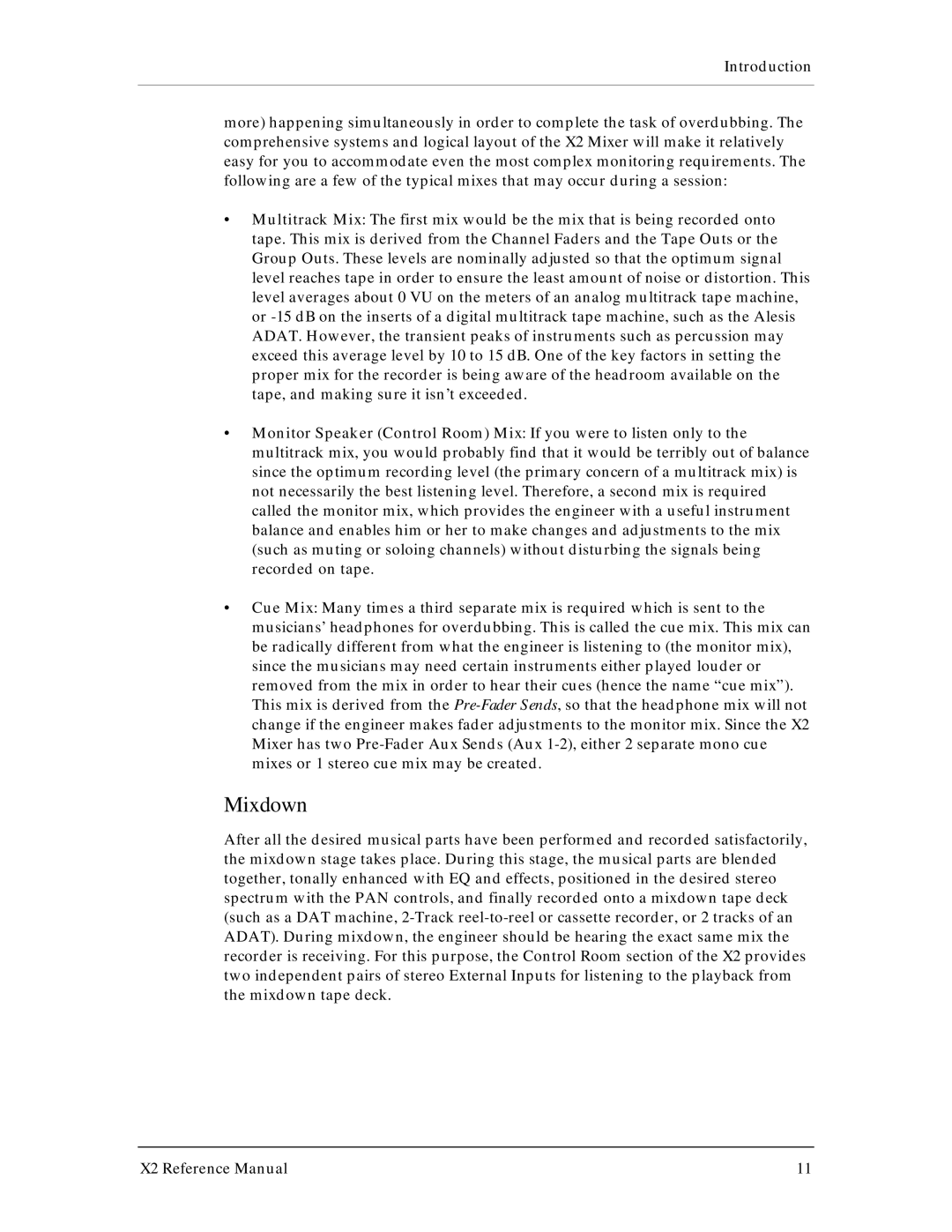
Introduction
more) happening simultaneously in order to complete the task of overdubbing. The comprehensive systems and logical layout of the X2 Mixer will make it relatively easy for you to accommodate even the most complex monitoring requirements. The following are a few of the typical mixes that may occur during a session:
•Multitrack Mix: The first mix would be the mix that is being recorded onto tape. This mix is derived from the Channel Faders and the Tape Outs or the Group Outs. These levels are nominally adjusted so that the optimum signal level reaches tape in order to ensure the least amount of noise or distortion. This level averages about 0 VU on the meters of an analog multitrack tape machine, or
•Monitor Speaker (Control Room) Mix: If you were to listen only to the multitrack mix, you would probably find that it would be terribly out of balance since the optimum recording level (the primary concern of a multitrack mix) is not necessarily the best listening level. Therefore, a second mix is required called the monitor mix, which provides the engineer with a useful instrument balance and enables him or her to make changes and adjustments to the mix (such as muting or soloing channels) without disturbing the signals being recorded on tape.
•Cue Mix: Many times a third separate mix is required which is sent to the musicians’ headphones for overdubbing. This is called the cue mix. This mix can be radically different from what the engineer is listening to (the monitor mix), since the musicians may need certain instruments either played louder or removed from the mix in order to hear their cues (hence the name “cue mix”). This mix is derived from the
Mixdown
After all the desired musical parts have been performed and recorded satisfactorily, the mixdown stage takes place. During this stage, the musical parts are blended together, tonally enhanced with EQ and effects, positioned in the desired stereo spectrum with the PAN controls, and finally recorded onto a mixdown tape deck (such as a DAT machine,
X2 Reference Manual | 11 |
